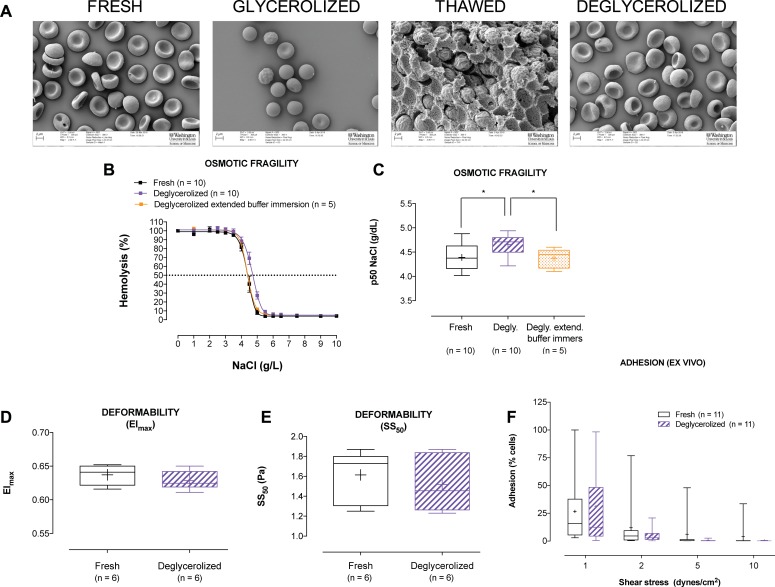Fig 3. RBC morphological imaging (scanning electron microscope; SEM) and comparison of osmotic fragility, deformability, and ex vivo adhesion in matched fresh and deglycerolized RBCs.
(A) Illustration of the characteristic biconcave disc morphology of fresh RBCs. Following glycerol addition, the majority of RBCs become swollen and spherocytic. After thawing, RBCs remain encapsulated in a glycerol matrix. Following deglycerolization RBCs return to their original morphology. (B) NaCl induced osmotic lysis in matched fresh, deglycerolized, and deglycerolized RBCs exposed to a prolonged buffer incubation (n = 5 or 10 individual donors, shown on graph). NaCl induced osmotic lysis increased immediately following deglycerolization, but returned to the original fresh phenotype following prolonged incubation (1 hour) of RBCs in the final deglycerolization buffer. (C) Half maximal effective concentration (EC50) increased immediately following deglycerolization, in comparison to fresh RBC samples (p < 0.05). However, prolonged incubation (1 hour) of RBCs in the final deglycerolization buffer at 37°C restored the original fresh RBC phenotype (n = 5 or 10 individual donors, shown on graph). (D) Shear induced maximal RBC deformability (Elongation Index maximum; EImax) was not different between matched fresh and deglycerolized RBCs (exposed to the prolonged buffer immersion) (n = ±6 individual donors). (E) The shear stress (Pa) at which RBC demonstrated 50% elongation (SS50) was also not different between matched fresh and deglycerolized RBCs (exposed to the prolonged buffer immersion) (n = 6 individual donors). (F) RBC adhesivity to endothelium was determined ex vivo. A trend was observed toward a decrease in RBC adhesivity in the deglycerolized RBCs, across all sheer stresses > 1 dyne/cm2, that did not reach statistical significance.

